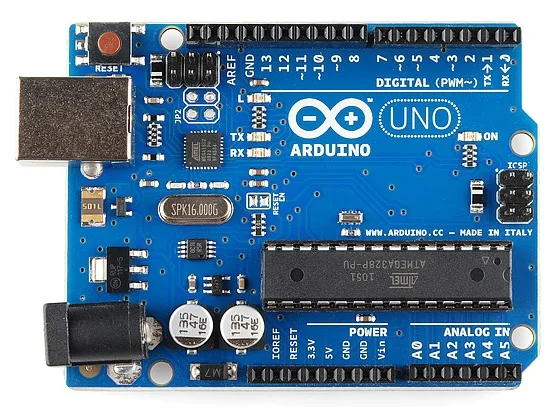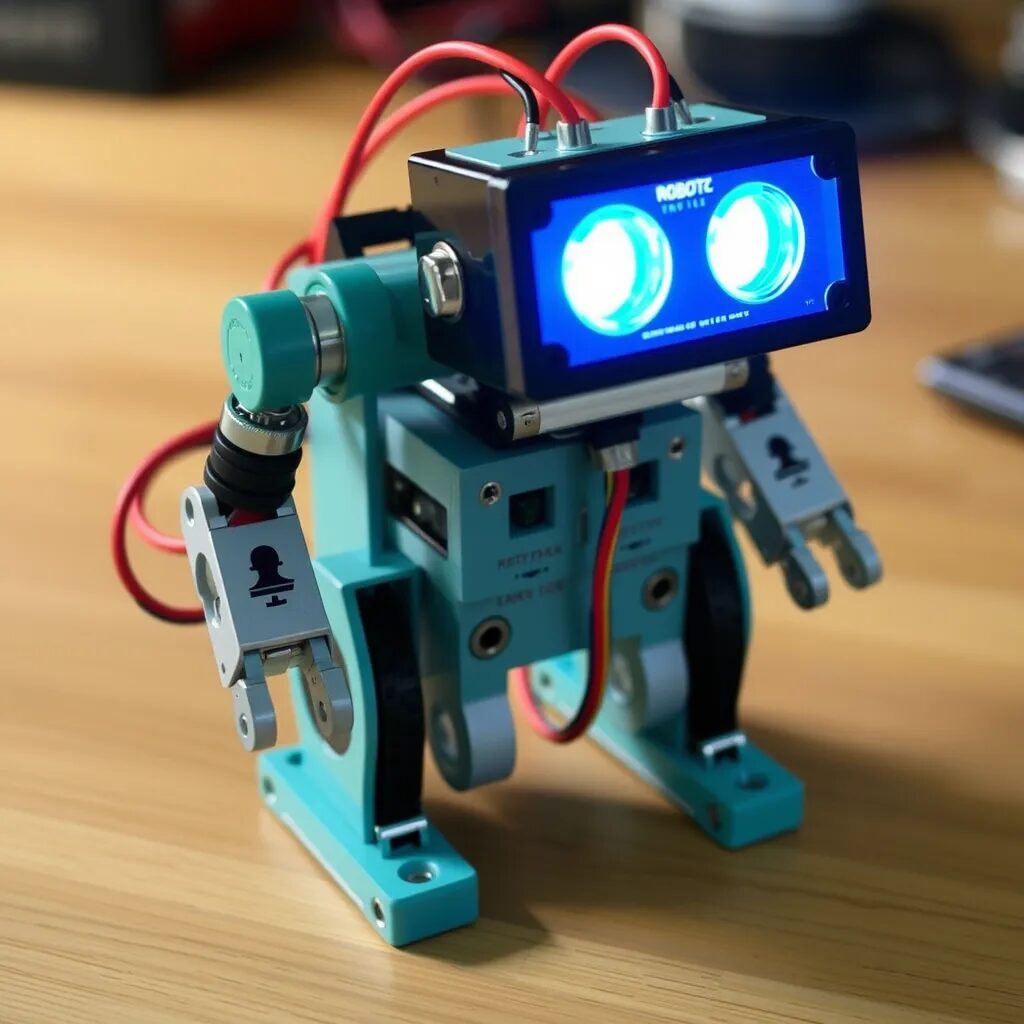Role of Arduino in Real World – In today’s interconnected world, Arduino has emerged as a powerful tool that combines the fields of electronics and programming. This open-source microcontroller platform has revolutionized the development of various real-world Arduino applications, enabling individuals and organizations to bring their innovative ideas to life.
By providing a user-friendly interface, Arduino has made electronics and programming accessible to a wide range of enthusiasts, from hobbyists to professionals.
In this blog, we will explore the significance of Arduino in different domains and discover how it has brought about positive change in the way we live and interact with technology.

Understanding Arduino
Arduino is an open-source platform, which means that its hardware and software designs are freely available for anyone to use and modify. The core component of an Arduino board is the microcontroller, which acts as the brain of the system. This microcontroller is programmed using the Arduino programming language, which is a simplified version of C programming language/C++. Arduino boards also feature various input/output pins that allow for the connection of sensors, actuators, and other electronic components. Additionally, Arduino boards can be powered by batteries or through USB connections, providing flexibility in terms of power supply.
The Arduino programming language is based on Wiring, a simplified programming language that makes it easier for beginners to get started with coding. The user-friendly interface of the Arduino software, along with the extensive library of pre-written code, allows users to quickly develop and test their projects. This simplicity and flexibility have contributed to the widespread adoption of Arduino in diverse fields, making it a versatile platform for creativity and innovation.
Real World Arduino Applications
Home Automation:
Arduino plays a crucial role in the development of smart homes. Through Arduino-based systems, homeowners can control various aspects of their houses, such as lights, thermostats, security systems, and appliances. This automation not only provides convenience but also promotes energy efficiency by allowing users to optimize energy consumption based on their needs.
Health Monitoring:
Arduino applications are significantly found in wearable health devices. With the help of Arduino-powered sensors, health data such as heart rate, blood pressure, and oxygen saturation levels can be collected and transmitted for further analysis. These wearable devices, such as heart rate monitors and pulse oximeters, have become essential tools for monitoring health conditions and promoting well-being. Arduino’s affordability and ease of use make it accessible to both medical professionals and individuals who want to monitor their health.
Agriculture and Farming:
Precision agriculture has greatly benefited from Arduino technology. Arduino-based systems are used in automated irrigation systems that ensure optimal water usage. Soil moisture monitoring, integrated with weather station data, helps farmers make informed decisions regarding irrigation and fertilization. These advancements in agriculture promote increased crop yield, efficient resource management, and sustainable farming practices.
Education:
Arduino has become an indispensable tool in the field of education. Its simplicity and affordability make it an ideal platform for teaching programming, electronics, and robotics. Arduino-based kits and projects enable students to learn hands-on and gain practical skills in a fun and engaging manner. By engaging in Arduino projects, students develop problem-solving abilities and foster creativity, preparing them for future careers in technology.
Industrial Automation:
Arduino has played a crucial role in transforming industrial processes. Through Arduino-based systems, industrial automation can be achieved, optimizing process control, quality assurance, and machinery monitoring. The cost-effectiveness and adaptability of Arduino make it an attractive choice for small and medium-sized enterprises. Allowing them to implement automation solutions that were previously only accessible to larger corporations.
Environmental Monitoring:
Environmental monitoring is another domain where Arduino finds extensive use. With the help of Arduino-based systems, environmental parameters such as air and water quality can be continuously tracked. Wildlife tracking systems, equipped with Arduino-powered sensors, provide valuable information for conservation efforts. Arduino’s contribution to environmental monitoring enables us to gain a deeper understanding of the world around us. Also, take necessary actions to preserve our planet.
Benefits and Challenges of Arduino in Real World
| Benefits | Challenges |
| The real-world Arduino applications offers several benefits. Its affordability makes it accessible to a wide range of users, ensuring that innovation is not limited to those with substantial resources. | However, there are some challenges associated with Arduino as well. The limited processing power of microcontrollers used in Arduino boards can sometimes be a hindrance, especially when dealing with computationally intensive tasks. |
| The simplicity and user-friendly interface of the Arduino software enable beginners to quickly get started and focus on their ideas rather than complex technicalities. | Scaling projects that involve multiple Arduino boards can also be challenging, as synchronization and communication between boards need to be carefully managed. |
| Arduino’s flexibility allows for the integration of various sensors, actuators, and other electronic components, making it a versatile platform for experimentation and prototyping. | Additionally, as Arduino is an open-source platform, security concerns arise when implementing Arduino applications that require data protection. |
Overcoming these challenges requires proper design and programming practices. Careful consideration of hardware limitations and optimization techniques can help mitigate processing power issues. Developing robust and secure code, as well as implementing encryption and authentication protocols. It ensures that data transferred through Arduino-based systems remains protected.
Case Studies related to Real-World Arduino Applications
To showcase the impact of Arduino applications in real-world, let’s explore a few case studies from different domains:
- In-home automation, Arduino-based systems have enabled homeowners to control their lights, thermostats, and security systems remotely, providing increased convenience and energy efficiency.
- Wearable health devices incorporating Arduino have facilitated the collection of vital signs, enabling users to monitor their health in real time and share data with medical professionals for diagnosis and treatment.
- Precision agriculture has witnessed advancements with Arduino-based systems integrating soil moisture sensors, weather station data, and automated irrigation, resulting in improved crop yield and efficient resource management.
- In educational settings, Arduino has revolutionized hands-on learning, allowing students to build and program their projects, and fostering a deeper understanding of both programming concepts and electronics.
- Industrial automation utilizes Arduino for process control, quality assurance, and monitoring of machinery, resulting in increased productivity and cost savings.
- Environmental monitoring projects powered by Arduino enable scientists, researchers, and enthusiasts to track air quality, water quality, and wildlife movement, contributing to our understanding and conservation efforts.
These case studies highlight the versatility and impact of Arduino across various domains, demonstrating its transformative potential in real-world applications.
Future Potential of Arduino
As Arduino continues to evolve, we can expect innovations that address current limitations. Ongoing developments in microcontroller technology will likely result in improved processing power and advanced connectivity options. Integration with emerging technologies, such as artificial intelligence and the Internet of Things (IoT). This will unlock new possibilities for Arduino-powered systems, driving further advancements in various domains.
Arduino future potential lies in the exploration of new application areas. Fields such as smart cities, renewable energy, and healthcare are expected to benefit from Arduino’s flexibility and affordability. As technology becomes more integrated into our daily lives, Arduino will play a crucial role in bridging the gap between ideas and implementation. Empower individuals and organizations to create impactful solutions.
Conclusion
In conclusion, Arduino has emerged as a transformative platform that bridges the gap between electronics and programming. Enable the creation of innovative real-world applications. Its accessibility, affordability, and simplicity have opened doors for individuals from diverse backgrounds to engage in electronics and programming projects. Arduino-powered systems have found applications in home automation, health monitoring, agriculture, education, industrial automation, environmental monitoring, and more.
While Arduino offers numerous benefits, there are also challenges that need to be addressed. These challenges include limited processing power, scalability issues, and security concerns. However, with proper design and programming practices, these challenges can be overcome.
FAQs on Role of Arduino in Real World
What is the use of Arduino in real life?
Arduino is an open-source electronics platform that has an easy-to-use physical programmable circuit board and software. Today it’s one of the most popular systems for building robots and smart home systems in the industry.
What is the role of the Arduino?
Arduino is an open-source electronics platform based on easy-to-use hardware and software. Arduino boards are able to read inputs – a light on a sensor, a finger on a button, or a Twitter message. And turn it into an output – activating a motor, turning on an LED, publishing something online.
How important is Arduino in life?
Arduino is important because it has uses in many everyday applications. Many children and adults don’t realize that the Arduino is behind many things.



